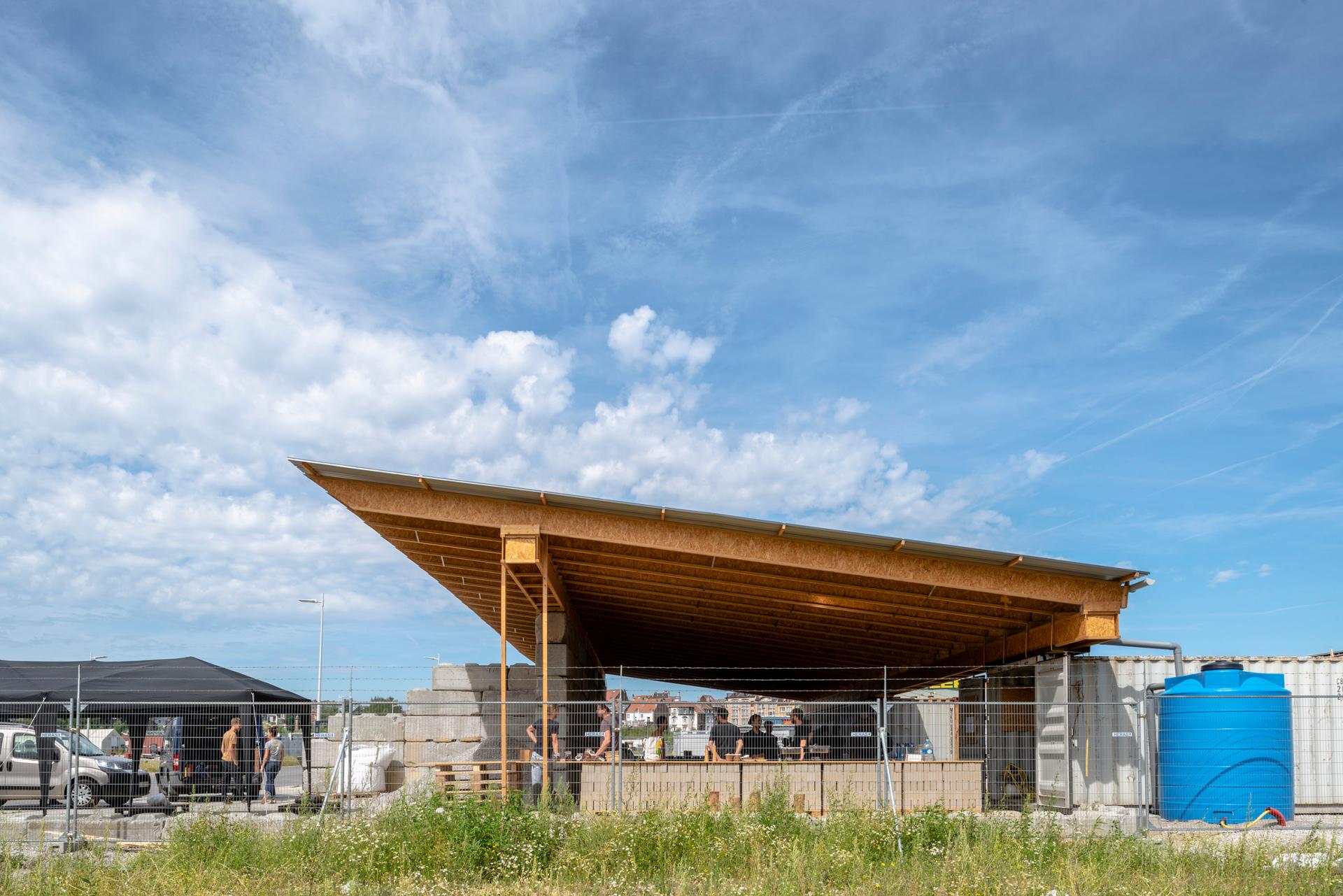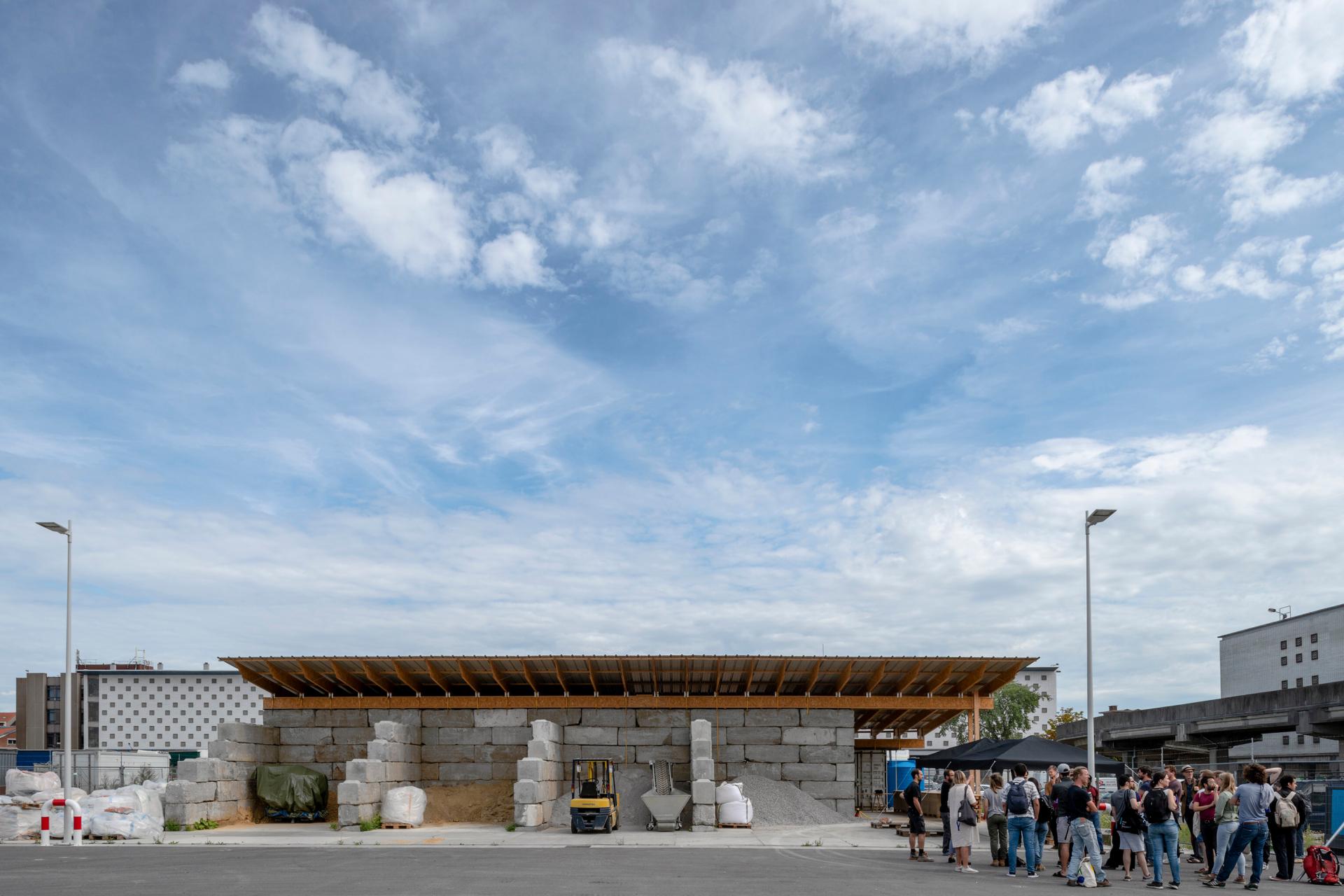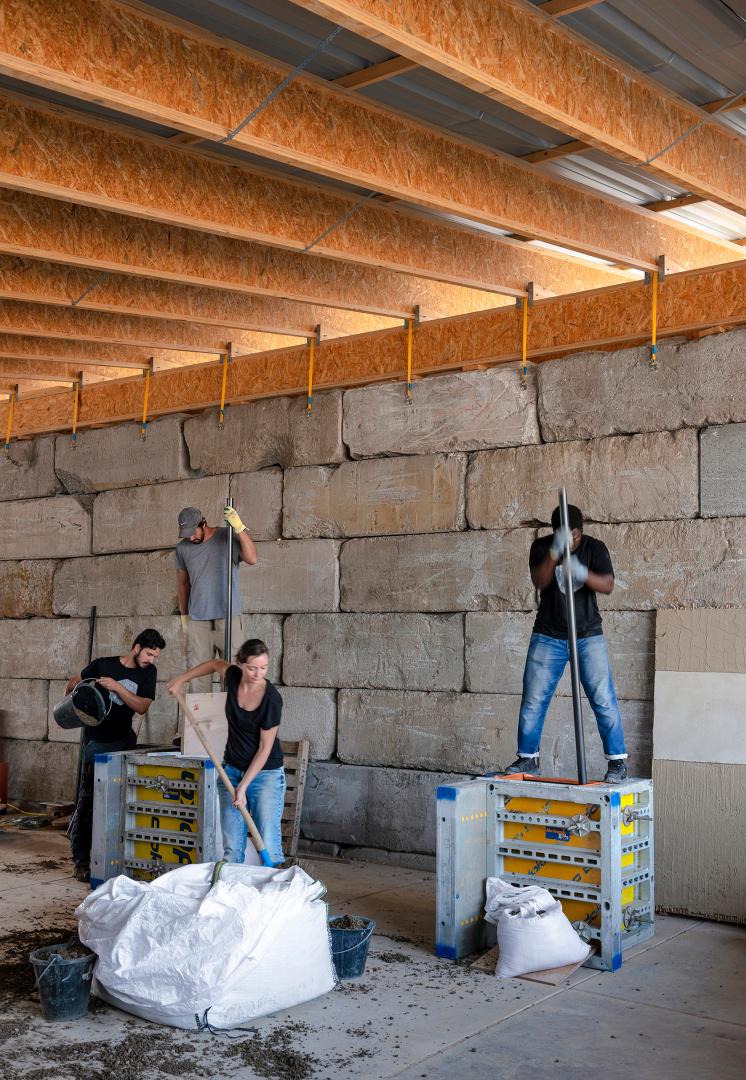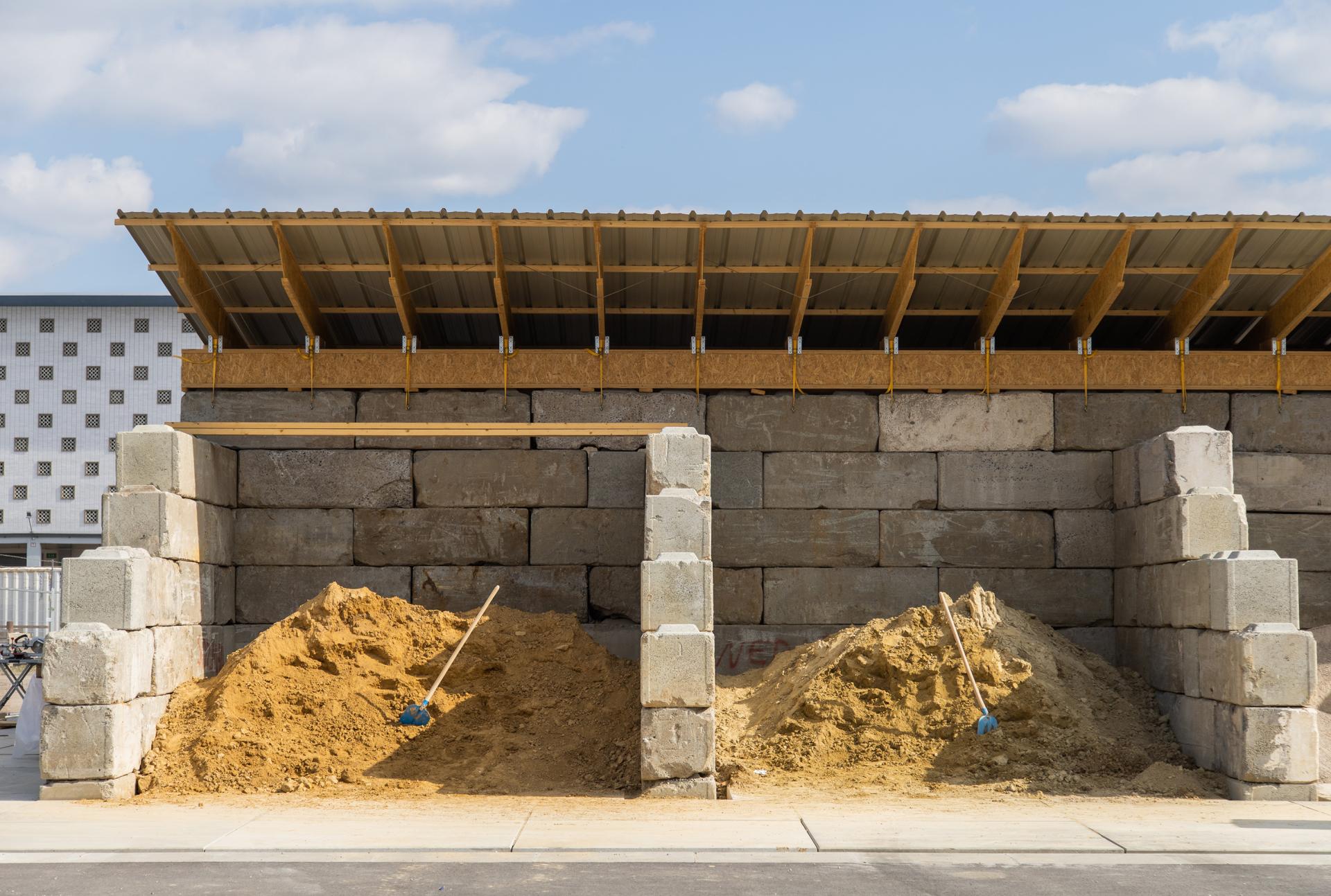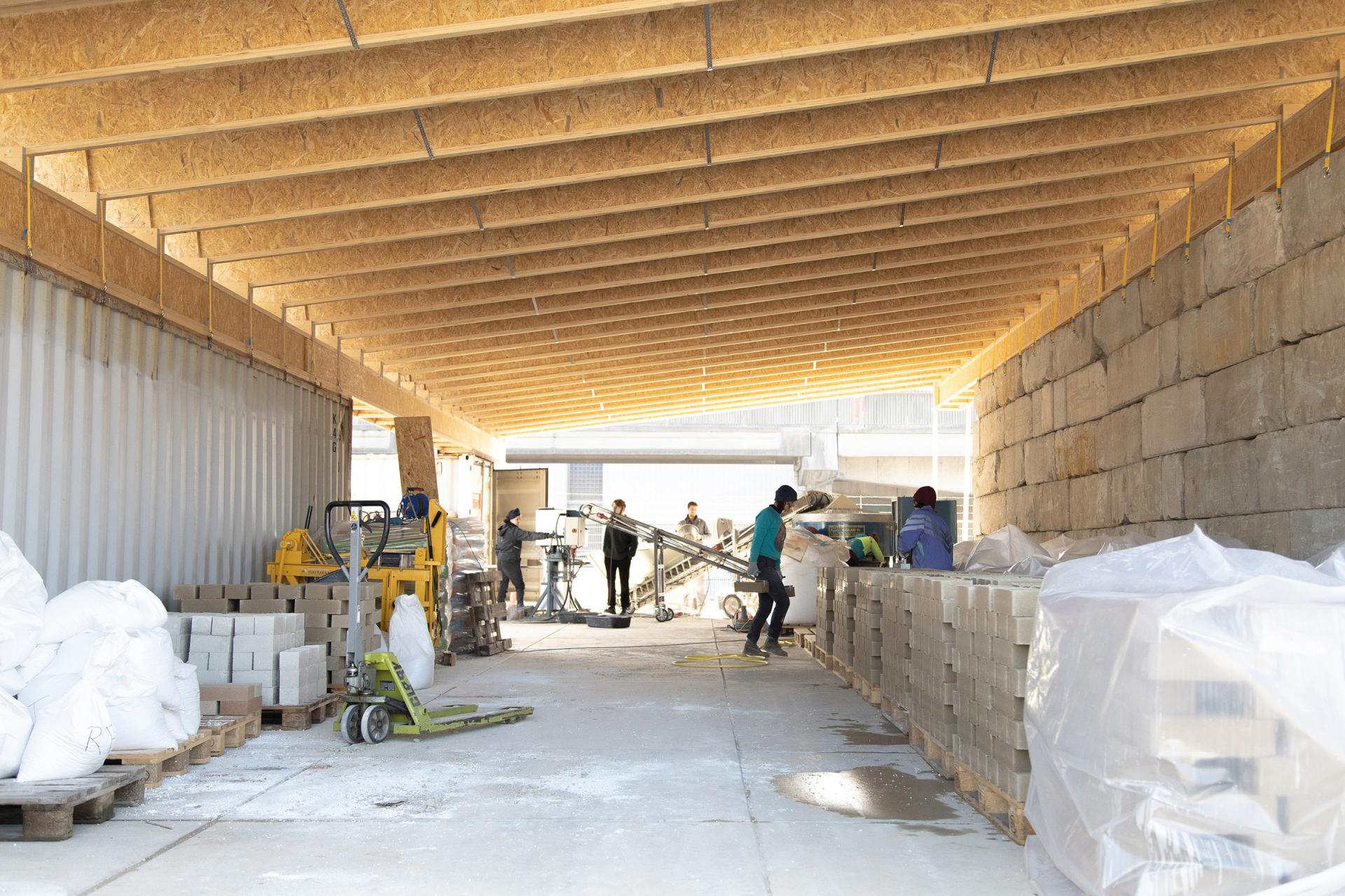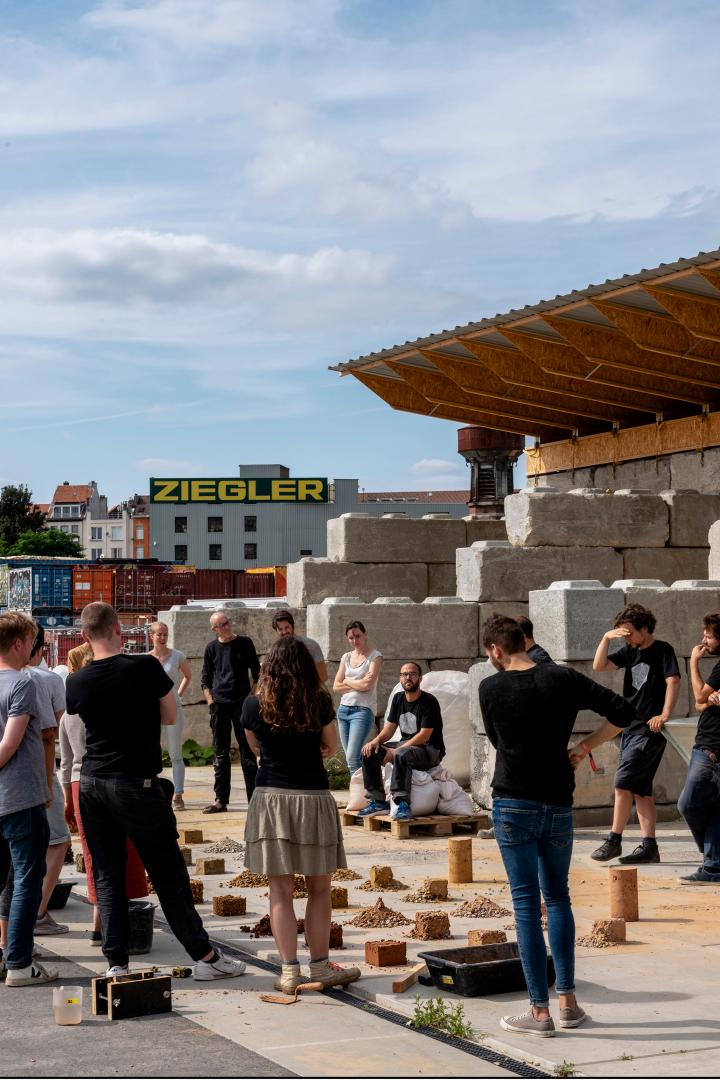Open production hall for BC Materials
Basic information
Project Title
Full project title
Category
Project Description
Located on unoccupied terrain in the Brussels' Canal zone, this production hall is fully demountable and transportable to other terrains, facilitating new ways of production in the city.
Project Region
EU Programme or fund
Description of the project
Summary
Located on unoccupied terrain in the Brussels' Canal zone, this production hall is fully demountable and transportable to other terrains, facilitating new ways of production in the city.
Secondhand prefab concrete tiles make up the floor, and secondhand prefab concrete stackable blocks provide storage space for resources. Together with securable containers, these blocks are the base for the wooden roof with demountable connectors such as ratchet lashers and metal rods and nuts.
Rainwater is recuperated, and in time renewable energy will be used, making it a fully demountable infrastructure for carbon neutral production. It uses unoccupied terrains in Brussels, and is conceived in a business model in which production can move from terrain to terrain every 5 years, leaving no waste behind. It shows an innovative way how to organize production in ever densifying cities, through the idea of permanent temporariness.
Key objectives for sustainability
When BC was looking for and affordable production site in Brussels, it was forced to turn towards an unoccupied plot in the Brussels Canal Zone has to offer – a sea breeze, industrial hangars, trucks riding in and out, and leftover space. In the midst of this eclectic association of nature, industry and materials, BC realized a small, somewhat robust but intriguing building: a storage and production site for materials. Built as a totally demountable structure, the hangar is made almost entirely pf circular materials. Second-hand concrete tiles, placed on a bed of construction waste, make up the floor. Two second-hand containers function as load-bearing points on which the roof is positioned. Second-hand Legio building blocks were used to create the storage spaces for sand, clay, loam and gravel. Stacked on top of each other, the Legio blocks require no joints, which makes them easily demountable. With straps and bolts, 25 wooden Steico I-beams are attached to the containers and hold up the corrugated iron sheet roof.
Key objectives for aesthetics and quality
The BC materials production sites has room to store products, contains a drying space and has a polyvalent workshop area where new composites can be explored and tested. Three products are on sale by BC materials in the Brickette (compressed earth blocks), the Brusselier (raw earth plaster), and the Kastar (a clay concrete).
In addition to the materials production, inspiring youngsters (designers, architecture students,...) is one of the most important tasks which take place in the building. At a rammed earth workshop with Case Design young people get the chance to not just get the theory behind earth building but also work, transform and put their feet in the earth.
Key objectives for inclusion
Our main aim is impact: replacing as much building materials with low carbon, circular earth based materials as possible, inspiring several partners in the building chain (real estate, contractors, architects, students,..) to work with earth and reconnecting locals with the act of (local) building materials & the assets they offer.
At the BC materials production site, an order of compressed earth blocks - based on excavated earth from Brussels is produced by both collaborators of BC materials, volunteers, architects, students & designers in a workshop.
Results in relation to category
The circular economy has become an important criterion in many of the tenders in the Belgian capital. Regularly invited to join a team, BC contributes with its knowledge and know-how. The goal of BC is not only to sell earth-building materials, but to change the building culture of a somewhat conservative building sector. That their expertise might also lead to atmospheric quality and tactile architecture becomes evident in their latest projects.
However, their current manual and low-tech production techniques are nit efficient enough at the moment for large scale projects. The architects are now in conversation with the bigger cement-block producers in order to discuss and elaborate strategies of collaboration and production with earth resources as an input. In addition to current trends for bioclimatic building (conceiving of buildings with a low to zero carbon emission percentage) and circular building (conceiving of buildings with recycled materials), BC introduces bio-based building and stresses the importance of building with natural materials.
How Citizens benefit
The work by the Brussels-based collective BC architects, studies & materials is in this context remarkable. Since 2012 BC has explored the relation between architecture, material production and the act of building. In both Muyinga (a small community in Burundi) and Edegem near Antwerp, they realized their first small public buildings with locally produced and manufactured materials, keeping a short supply chain of expertise and labor. To achieve their objectives, BC needed to bypass regulations proscribing the execution of the designed project by the architect. BC operates through three different entities: BC studies, a non-profit organization, elaborates specific analyses for the site, in close collaboration with local craftsmen. BC architects design the projects and survives them. BC materials, a cooperative society founded in 2019, expand the analyses of B studies and producers building materials.
Innovative character
The polluting character of the construction sector lay at the origin of BC materials. By collecting raw materials from Brussels construction sites, BC exports the possibility of urban mining. “Every year, some 36 million tons of earth are dug up in Belgium, of which 2 million come from Brussels. Forty per cent of this excavated earth is reused for road construction and major infrastructure works, but the earth-moving sector has trouble dealing with the remaining g 60 per cent”, clarifies Ken de Cooman. Through an agreement with the earth-moving sector in Brussels, BC recuperates sand, loam, clay and gravel in order to turn them into new building materials.

